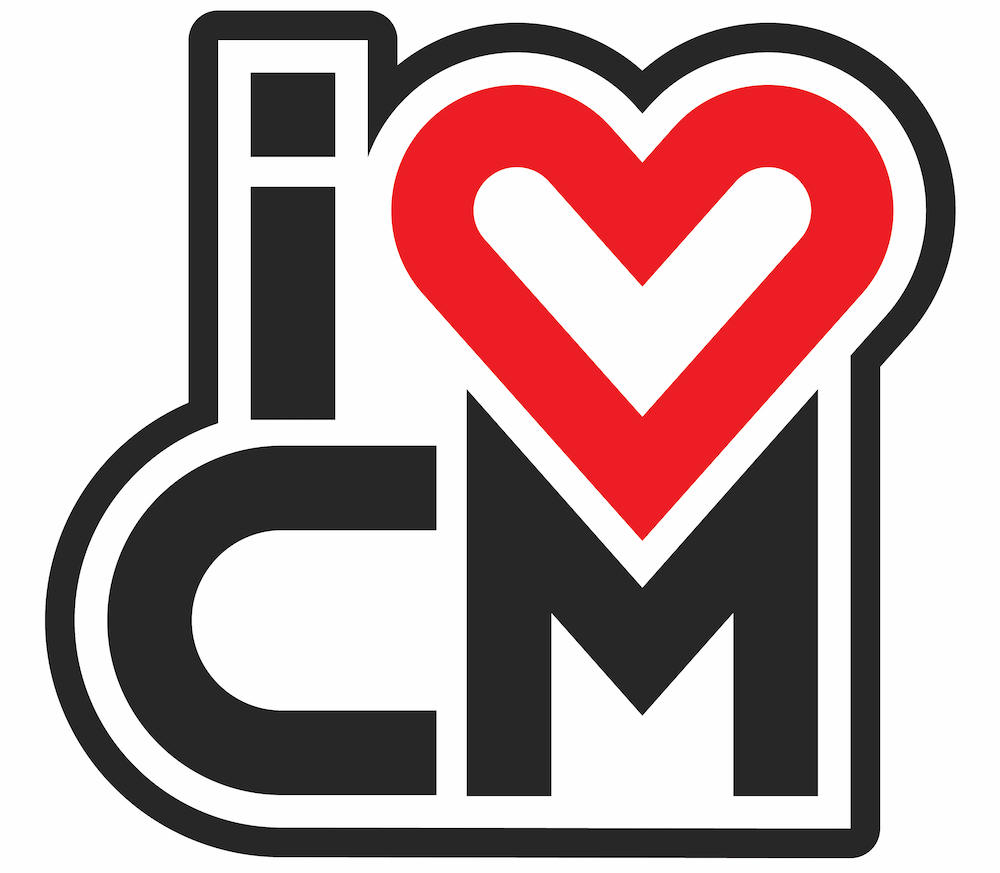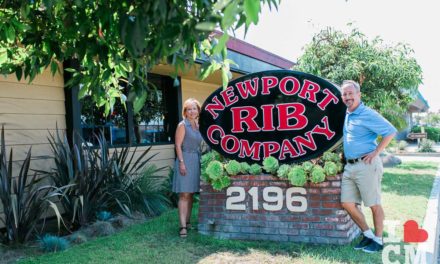
Photo courtesy of the Costa Mesa Historical Society.
The story of how the Costa Mesa city limits came to be is not necessarily a story of people getting along. It’s not always about people agreeing. And for every chapter of it that is interesting, there seems to be many more that are more mundane and routine.
But, when one reads the entire book donning red heart-shaped glasses (which we enjoy doing here at I Heart Costa Mesa), there are more hearts in the story than it originally lets on.
It’s a saga of hearts genuinely sharing an interest in a nascent Costa Mesa, sometimes for benevolent, community-oriented reasons, sometimes for more capitalistic ones. And, as hearts are wont to do, they clashed. The hearts were from people already well-established in town and knew the Mesa as the place to be. Others hailed from elsewhere, notably the south in Newport Beach and the north in Santa Ana.

Map courtesy of the Costa Mesa Historical Society.
In Costa Mesa’s earliest days, all hearts seemed to be converging in this city we know and love today. From those decades, forged through a smattering of interests, spawned a city distinctly unique from its neighbors. Some say that in and of itself was a miracle.
Today, Costa Mesa contains 15.7 square miles and, as of a 2017 U.S. Census data estimate, 113,825 people. But when the city became a real city — a process known as incorporation — it was just 3.5 square miles, population 16,185.
In the 1940s and early 1950s, Costa Mesa was unincorporated yet bustling with activity. During World War II, it housed the massive Santa Ana Army Air Base, where more than 100,000 servicemen and servicewomen passed through. It had at least two colleges, Orange Coast College (founded in 1947) and Southern California Bible College (which bought its Costa Mesa property in 1948 and eventually became Vanguard University); a thriving boatbuilding industry in the Westside; fiberglass-based companies; and the Orange County Fairgrounds, to name just a few.
A 1948 article in the Globe-Herald, a local Costa Mesa newspaper and one of the precursor publications to today’s Daily Pilot, noted the scene thusly: “Our Home Town has come a long way [since 1923]. From a scattered area of 400 homes to a closely knit community of more than 3,700 families. There’s been a change in our thinking, too. Today, we think of our Home Town with pride, as a mighty good place to live — and an entity in itself.”
Still, our friends at the Costa Mesa Historical Society (whom we owe a great deal of gratitude for the bulk of information in this story, notably Art and Mary Ellen Goddard) tell us that eyes from the likes of Huntington Beach, Newport Beach and Santa Ana — three older, well-established cities — were closing in on Costa Mesa by the early 1950s. The Mesa couldn’t stay unincorporated forever.

Photo: Brandy Young
Santa Ana wanted to annex the former army base land. That could’ve been a good chunk of modern-day Costa Mesa north of Wilson Street, as well as the industrial office park land west of John Wayne Airport. Newport Beach wanted its share too by pushing its boundaries northward from the harbor.
Some hearty Costa Mesans were eager for home rule. A 1947 effort to accomplish that failed. But by the summer of 1953, it had gained enough moment to spur an election. The incorporation measure passed. It went into effect June 29. The original boundaries in 1953 encompassed most of what today is the Eastside. It also grabbed the downtown, going as far west as Placentia and as far north as Joann Street.
Interestingly enough, a month before Costa Mesa’s incorporation vote, in what the Costa Mesa Historical Society calls a “hurry-up” election, a parcel near where Newport HeightsElementary School is today went to Newport, not Costa Mesa.
Once Costa Mesa was official, though, the annexation skirmishes and battles continued feverously. The Freedom Homes tract was an early annexation victory in 1954.
In the years after 1953, Art Goddard puts the annexation sagas accordingly, “You could call it a blood sport or a chess game.”
Perhaps its most interesting twist was a “cherry stem” maneuver by Newport Beach that annexed a sliver of land running north from West Newport along the Banning Ranch property and into where the Newport Terrace condominiums are today, by the terminus of West 19th Street. At the time, those condos were the site of Newport’s city dump.
To stop Newport from annexing farther north, Costa Mesa, seeing this as a threat, annexed a 200-foot-wide strip in 1955 that went into what today is Talbert Regional Park and across the Santa Ana River to Huntington Beach.
The Historical Society has a map showing Costa Mesa’s annexation victories from 1953 to 2003. (That’s a pic of the map near the top of this article.) Parts north of Joann Street, in areas like Mesa Verde, Mesa del Mar and the StateStates, annexation came in wide chunks.

Mister History: Art Goddard at the Costa Mesa Historical Society

Photos: Brandy Young
The Eastside, though, involved lots of street-by-street, block-by-block efforts to gain territory. It was Costa Mesa vs. Newport Beach. Art Goddard says Costa Mesa lured potential residents with the promise of better city services: waste delivery, infrastructure, police response times, firefighter protection and the like. Newport had an enviable ZIP code and property values.
Hearts from both cities clashed for years. Pieces of land went either way.
But let this number sink in: Between 1954 and 1984, Costa Mesa had 106 annexations. It was a busy time gobbling up territory.
One incredibly crucial annexation involved Santa Ana. The property was owned by the Segerstroms, farmer types who envisioned a grand shopping center called South Coast Plaza. In an oral history book published by Cal State Fullerton, Henry T. Segerstrom noted that Santa Ana already had an established retail presence.
“Our logic was that if we annexed our potential retail site to Santa Ana, the vested retail interests in Santa Ana would fight politically any development of a shopping center in the south side of Santa Ana, which would threaten their existence or be adverse to their economic interests,” Segerstrom recalled in the book. “Costa Mesa, on the other hand, was in need of a tax base, and we felt that they would be supportive of the development of a major retail center.”
According to Segerstrom, who died in 2015 at age 91, the “final straw” was when the city manager of Santa Ana visited their ranch house. The manager said his city wished to annex everything down to Baker Street “and crush the new city of Costa Mesa.”
As it came to be, the Segerstroms hearted Costa Mesa more. Their land got put into the Costa Mesa fold, and South Coast Plaza opened its doors in 1967. Since then, in addition to placing this small corner of Orange County on the map of international shopping destinations, Costa Mesa’s city coffers have received hundreds millions in sales tax revenue from South Coast Plaza over the years, giving City Hall a consistently firm financial footing to pay for essential services.

Photo: Brandy Young
With so many hearts reaching for their slice of Costa Mesa — and so many others within it keeping and maintaining what’s theirs — the result has been an eclectic city with a diverse set of attractants. Now and in its 65-year history, Costa Mesa has been an Orange County and world Mecca for just about everything imaginable, partially thanks to strategic annexation: shopping, fine dining, fast food, fine arts, hipster culture, mass media, action sports apparel, boatbuilding, autos and manufacturing.
“I always thought of Costa Mesa,” Art Goddard says, “as the little city that could.” ♥




